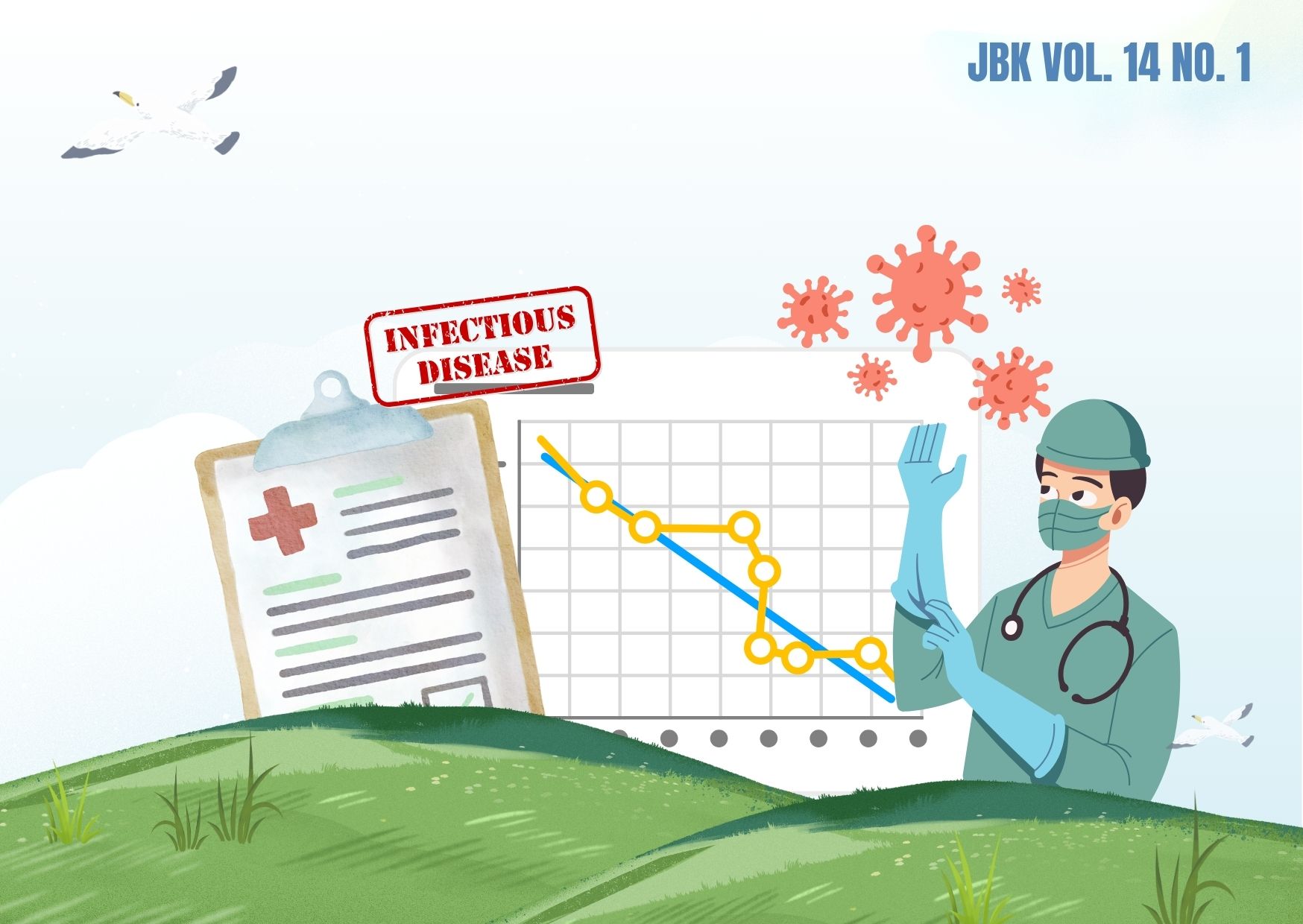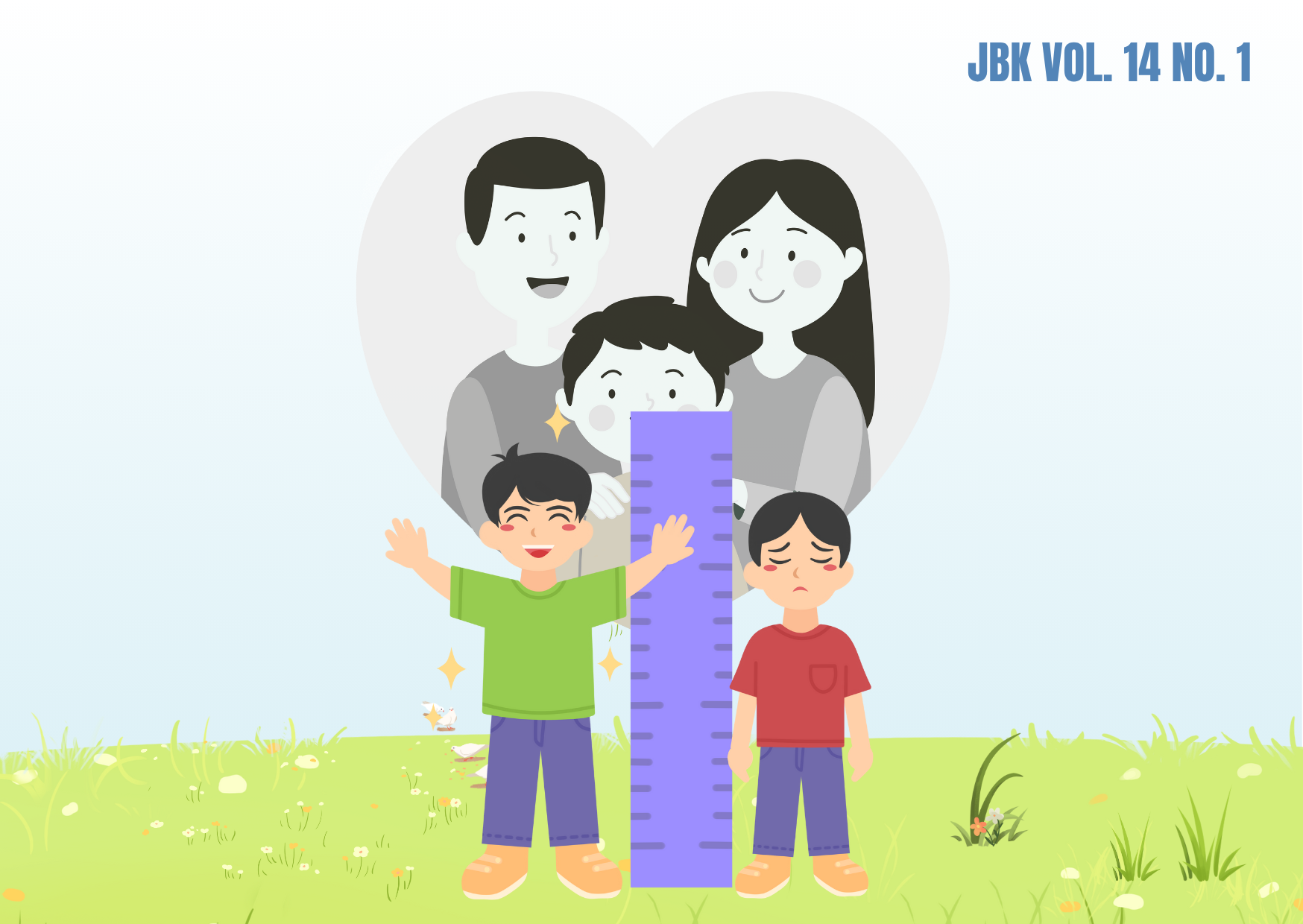MODERN CONTRACEPTIVE USE AMONG URBAN AND RURAL YOUNG MARRIED WOMEN IN INDONESIA
Family planning is generally recognized as a crucial key in reducing maternal and neonatal mortality and morbidity. This study aimed to explore whether the predictors of modern contraceptive use among young married women differ by place of residence. The data were drawn from the 2019 Indonesia Population, Family Planning, and Family Development Program Performance and Accountability Survey. This study restricted the sample of non-pregnant married women aged 15-24, resulting in a sample of 3,927 young married women. Logistic regression with the place of residence variable used as an interaction term to model the association between selected social, economic, and demographic variables and the outcome variable, modern contraceptive use for each group of women. The number of living children and region exhibited significant variability in contraceptive use among urban and rural young married women. Urban young married women with 1-2 children had higher odds (OR = 27.10; p = 0.000) of using contraceptives compared to rural ones (OR = 15.60; p = 0.000) in regard to number of living children. Rural women residing other islands (non-Java Bali) were less affected (OR = 0.59; p = 0.000) than urban young married women in accessing modern contraceptives (OR = 0.64; p = 0.002). Disseminating information, education, and communication about the health risk of having more than two children would improve the use of modern contraceptives. Family planning policies should also be tailored to address the specific needs of different places of residence with geographical regions.
Timofeev J, Reddy UM, Huang CC, Driggers RW, Landy HJ, Laughon SK. Obstetric Complications, Neonatal Morbidity, and Indications for Cesarean Delivery by Maternal Age. Obstet Gynecol [Internet]. 2013;122(6):1184–1195. Available from: https://doi.org/10.1097/aog.0000000000000017
Ahmed S, Li Q, Liu L, Tsui AO. Maternal Deaths Averted By Contraceptive Use: An Analysis of 172 Countries. Lancet [Internet]. 2012;380(9837):111–125. Available from: https://doi.org/10.1016/S0140-6736(12)60478-4
Sarkar A, Chandra-Mouli V, Jain K, Behera J, Mishra SK, Mehra S. Community Based Reproductive Health Interventions for Young Married Couples in Resource-constrained Settings: A Systematic Review. BMC Public Health [Internet]. 2015;15:1–19. Available from: https://doi.org/10.1186/s12889-015-2352-7
Subramanian L, Simon C, Daniel EE. Increasing Contraceptive Use among Young Married Couples in Bihar, India: Evidence from a Decade of Implementation of the PRACHAR Project. Glob Heal Sci Pract [Internet]. 2018;6(2):330–344. Available from: https://doi.org/10.9745%2FGHSP-D-17-00440
Brown W, Ahmed S, Roche N, Sonneveldt E, Darmstadt GL. Impact of Family Planning Programs in Reducing High-Risk Births Due to Younger and Older Maternal Age, Short Birth Intervals, and High Parity. Semin Perinatol [Internet]. 2015;39(5):338–344. Available from: https://doi.org/10.1053/j.semperi.2015.06.006
Ahinkorah BO. Predictors of Modern Contraceptive Use among Adolescent Girls and Young Women in Sub-Saharan Africa: A Mixed Effects Multilevel Analysis of Data from 29 Demographic and Health Surveys. Contracept Reprod Med [Internet]. 2020;5:1–12. Available from: https://doi.org/10.1186/s40834-020-00138-1
Smith E, Daley AM. A Clinical Guideline for Intrauterine Device Use in Adolescents. J Am Acad Nurse Pract [Internet]. 2012;24(8):453–462. Available from: https://doi.org/10.1111/j.1745-7599.2012.00753.x
Chandra-Mouli V, McCarraher DR, Phillips SJ, Williamson NE, Hainsworth G. Contraception for Adolescents in Low and Middle Income Countries: Needs, Barriers, and Access. Reprod Health [Internet]. 2014;11(1):1–8. Available from: https://doi.org/10.1186%2F1742-4755-11-1
National Population and Family Planning Board, Central Bureau of Statistics, The Ministry of Health U. National Population and Family Planning Board. 2018. p. 1–446 Survei Demografi dan Kesehatan Indonesia 2017.
Gayatri M, Utomo B. Contraceptive Method Use in Indonesia: Trends and Determinants between 2007, 2012 and 2017. JournalIndian J Public Heal Res Dev [Internet]. 2019;10(12):1818–1823. Available from: https://doi.org/10.37506/v10/i12/2019/ijphrd/192130
Kistiana S, Gayatri M, Sari DP. Determinants of Modern Contraceptive Use among Young Married Women (Age 15-24) in Indonesia. Glob J Health Sci [Internet]. 2020;12(13):37–48. Available from: https://doi.org/10.5539/gjhs.v12n13p37
Gafar A, Suza DE, Efendi F, Has EMM, Pramono AP, Susanti IA. Determinants of Contraceptive Use among Married Women in Indonesia. F1000Research [Internet]. 2020;9:1–9. Available from: https://doi.org/10.12688%2Ff1000research.22482.1
Mas'udah AF, Pristya TY, Andarmoyo S. Parity and Marital Status as Factors Influencing Contraceptive Use among Adolescents in Indonesia. Kesmas J Kesehat Masy Nas [Internet]. 2021;16(1):33–38. Available from: https://doi.org/10.21109/kesmas.v16i1.3276
Wijayanti N, Thaweesit S, Sunpuwan M. Contraceptive Use among Married Adolescent Women in Indonesia. J Heal Res [Internet]. 2017;29(5):323–331. Available from: https://doi.org/10.14456/jhr.2015.22
Rahayu R, Utomo I, McDonald P. Contraceptive Use Pattern among Married Women in Indonesia. In: International Conference on Family Planning: Research and Best Practices [Internet]. Kampala; 2009. p. 1–36. Available from: http://fpconference.org/2009/media/DIR_169701/15f1ae857ca97193ffff83a6ffffd524.pdf
Kafle RB. Dynamics of Contraceptive Use among Young Women in Nepal. Nepal Popul J [Internet]. 2018;18(17):33–42. Available from: https://doi.org/10.3126/npj.v18i17.26375
Worku AG, Tessema GA, Zeleke AA. Trends and Determinants of Contraceptive Use among Young Married Women (Age 15-24) Based on the 2000, 2005, and 2011 Ethiopian Demographic and Health Surveys: A Multivariate Decomposition Analysis [Internet]. 2014. Available from: https://dhsprogram.com/pubs/pdf/WP103/WP103.pdf
Casey SE, Gallagher MC, Kakesa J, Kalyanpur A, Muselemu JB, Rafanoharana RV, et al. Contraceptive Use among Adolescent and Young Women in North and South Kivu, Democratic Republic of The Congo: A Cross-Sectional Population-Based Survey. PLOS Med [Internet]. 2020;17(3):1–16. Available from: https://doi.org/10.1371/journal.pmed.1003086
Islam AZ. Factors Affecting Modern Contraceptive Use among Fecund Young Women in Bangladesh: Does Couples' Joint Participation in Household Decision Making Matter? Reprod Health [Internet]. 2018;15:1–9. Available from: https://doi.org/10.1186%2Fs12978-018-0558-8
Asiimwe JB, Ndugga P, Mushomi J, Ntozi JPM. Factors Associated with Modern Contraceptive Use among Young and Older Women in Uganda; A Comparative Analysis. BMC Public Health [Internet]. 2014;14:1–11. Available from: https://doi.org/10.1186/1471-2458-14-926
Namasivayam V, Dehury B, Prakash R, Becker M, Anand P, Mishra A, et al. Understanding the Rise in Traditional Contraceptive Methods Use in Uttar Pradesh, India. Reprod Health [Internet]. 2023;20:1–14. Available from: https://doi.org/10.1186/s12978-022-01547-y
Almalik M, Mosleh S, Almasarweh I. Are Users of Modern and Traditional Contraceptive Methods in Jordan Different? East Mediterr Heal J [Internet]. 2018;24(4):377–384. Available from: https://doi.org/10.26719/2018.24.4.377
Thulaseedharan JV. Contraceptive Use and Preferences of Young Married Women in Kerala, India. Open Access J Contracept [Internet]. 2018;9:1–10. Available from: https://doi.org/10.2147/OAJC.S152178
Ankomah A, Anyanti J, Oladosu M. Myths, Misinformation, and Communication about Family Planning and Contraceptive Use in Nigeria. Open Access J Contracept [Internet]. 2011;2:95”105. Available from: https://doi.org/10.2147/OAJC.S20921
Ahmed M, Seid A. Association between Exposure to Mass Media Family Planning Messages and Utilization of Modern Contraceptive among Urban and Rural Youth Women in Ethiopia. Int J Womens Health [Internet]. 2020;12:719”729. Available from: https://doi.org/10.2147/IJWH.S266755
Gebre MN, Edossa ZK. Modern Contraceptive Utilization and Associated Factors among Reproductive-Age Women in Ethiopia: Evidence from 2016 Ethiopia Demographic and Health Survey. BMC Womens Health [Internet]. 2020;20:1–14. Available from: https://doi.org/10.1186/s12905-020-00923-9
Shagaro SS, Gebabo TF, Mulugeta BT. Four Out of Ten Married Women Utilized modern Contraceptive Method in Ethiopia: A Multilevel Analysis of the 2019 Ethiopia Mini Demographic and Health Survey. PLoS One [Internet]. 2022;17(1):1–16. Available from: https://doi.org/10.1371/journal.pone.0262431
Appiah F, Seidu AA, Ahinkorah BO, Baatiema L, Ameyaw EK. Trends and Determinants of Contraceptive Use among Female Adolescents in Ghana: Analysis of 2003–2014 Demographic and Health Surveys. SSM - Popul Heal [Internet]. 2020;10:1–6. Available from: https://doi.org/10.1016/j.ssmph.2020.100554
Zegeye B, Ahinkorah BO, Idriss-Wheeler D, Olorunsaiye CZ, Adjei NK, Yaya S. Modern Contraceptive Utilization and Its Associated Factors among Married Women in Senegal: A Multilevel Analysis. BMC Public Health [Internet]. 2021;21:1–13. Available from: https://doi.org/10.1186/s12889-021-10252-7
Investments I. Reducing Indonesia's Java-Centric Development by Moving the Capital Away from Jakarta, But Where Will All the Demonstrations Go? [Internet]. 2019 [cited 2020 Oct 10]. Available from: https://www.indonesia-investments.com/id/news/news-columns/reducing-indonesia-s-java-centric-development-by-moving-the-capital-away-from-jakarta/item9195
Julio J, Marwoto PB, Manullang RR. Analisis Disparitas Perekonomian Antar Pulau Besar di Indonesia Tahun 2013-2017. J Ilm Progresif Manaj Bisnis [Internet]. 2019;6(2):1–11. Available from: https://e-jurnal.stie-ibek.ac.id/index.php/JIPMB/article/view/115
Wondie KY, Badi MB, Tamiru AT. Rural–Urban Differentials of Long-Acting Contraceptive Method Utilization among Reproductive-Age Women in Amhara Region, Ethiopia: Further Analysis of the 2016 EDHS. Open Access J Contracept [Internet]. 2020;11:77”89. Available from: https://doi.org/10.2147/OAJC.S255551
Mazzei A, Ingabire R, Mukamuyango J, Nyombayire J, Sinabamenye R, Bayingana R, et al. Community Health Worker Promotions Increase Uptake of Long-Acting Reversible Contraception in Rwanda. Reprod Health [Internet]. 2019;16:1–11. Available from: https://doi.org/10.1186/s12978-019-0739-0
Kumar A, Jain AK, Ram F, Acharya R, Shukla A, Mozumdar A, et al. Health Workers' Outreach and Intention to Use Contraceptives among Married Women in India. BMC Public Health. 2020;20:1–9. Available from: https://doi.org/10.1186/s12889-020-09061-1
Ochako R, Temmerman M, Mbondo M, Askew I. Determinants of Modern Contraceptive Use among Sexually Active Men in Kenya. Reprod Health [Internet]. 2017;14:1–15. Available from: https://doi.org/10.1186/s12978-017-0316-3
Lun CN, Aung T, Mya KS. Utilization of Modern Contraceptive Methods and Its Determinants among Youth in Myanmar: Analysis of Myanmar Demographic and Health Survey (2015-2016). PLoS One [Internet]. 2021;16(10):1–19. Available from: https://doi.org/10.1371/journal.pone.0258142
Copyright (c) 2023 Jurnal Biometrika dan Kependudukan

This work is licensed under a Creative Commons Attribution-NonCommercial-ShareAlike 4.0 International License.
Copyright©2022 Jurnal Biometrika dan Kependudukan (Journal of Biometrics and Population)
This work is licensed under a Creative Commons Attribution-NonCommercial-ShareAlike 4.0 International License.
1. Copyright of all journal manuscripts is held by the Jurnal Biometrika dan Kependudukan.
2. Formal legal provisions to access digital articles of the electronic journals are subject to the provision of the Creative Commons Attribution-ShareAlike license (CC BY-NC-SA), which means that Jurnal Kesehatan Biometrika dan Kependudukan to keep, transfer media/format, manage in the form of databases, maintain, and publish articles.
3. Published manuscripts both printed and electronic are open access for educational, research, and library purposes. Additionally, the editorial board is not responsible for any violations of copyright law.



































